
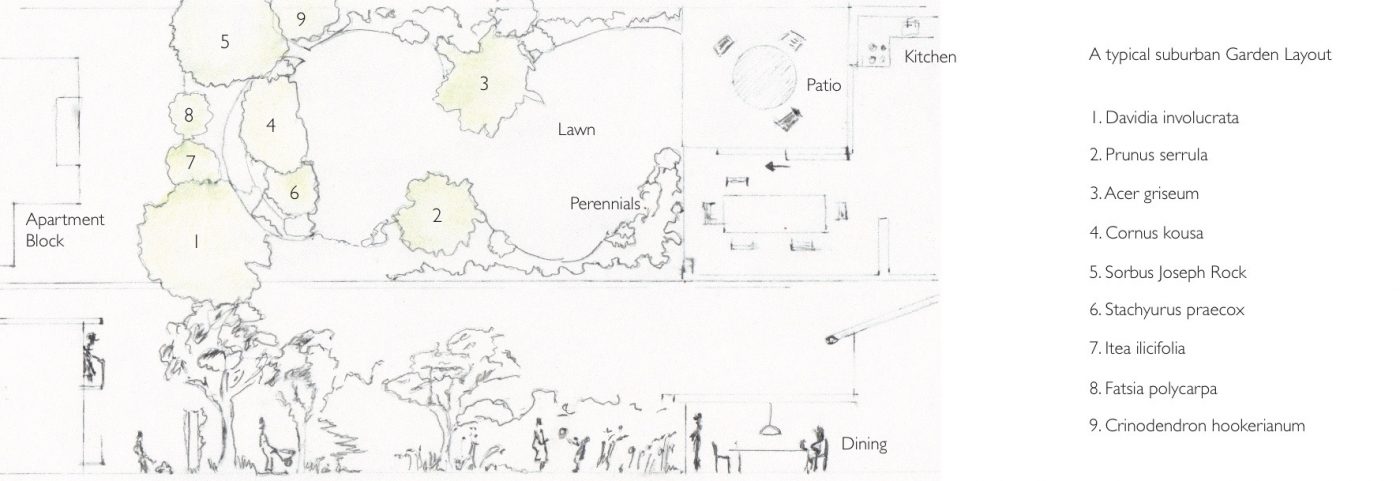
When planting a small garden it can seem counterintuitive to start looking at larger plants like shrubs and trees. But these larger woody plants form the backbone of a garden and, used creatively, change and expand the space by drawing the eye in new directions.
Using height to bring dynamism and texture to a space, especially in winter. Using a canopy to frame a view or borrow a surrounding landscape. Or intentionally blocking a view to interrupt your gaze and force you to look around it to other vignettes can massively expand how big a garden feels.
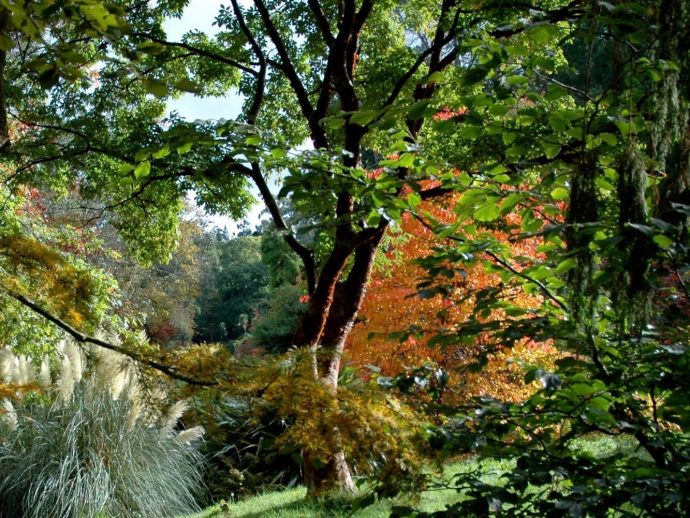
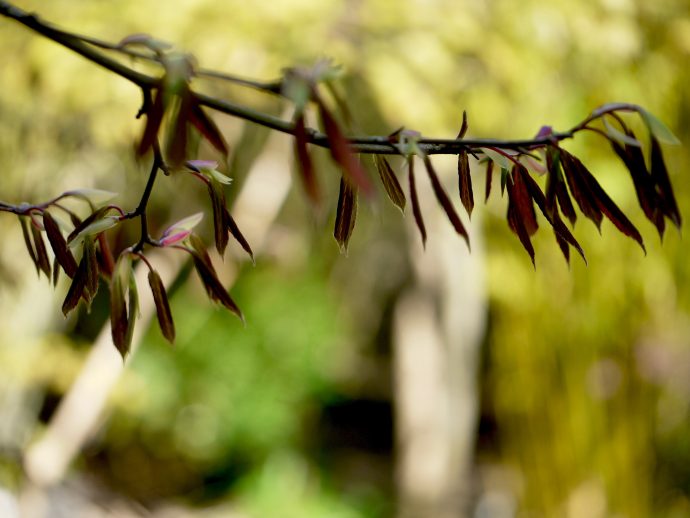
As much as possible it is best to consider trees and shrubs as a collective unit when planning your garden. This is easier of course if you have the luxury of a new space or are doing a major overhaul. There are various advantages to this.
It considers the space as a long term environment which will mature and change. A sunny open garden will gather more shade as the trees and shrubs establish and it is helpful to consider this a sign of progress rather than any kind of negative, opening the way to a variety of interesting woodland plants you may not have previously been able to accommodate.
Planting larger plants together also allows their roots to establish on even terms, making life easier in both the short and long term.
There is also a new mindset offered by carefully siting a new garden with trees and shrubs, and allowing a screen to establish in a naturalistic manner as opposed to a predictable line of hedge.
Small gardens can be more accomodating of trees than you might think, and there are a variety of plants to choose from with a wide array of interest.
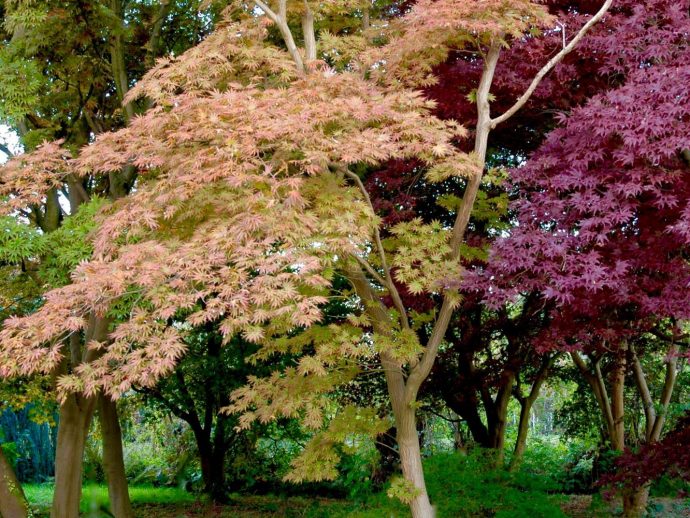
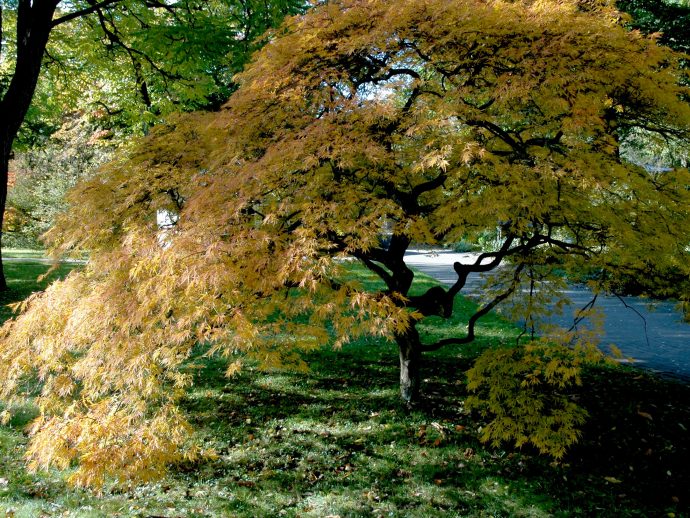
Japanese maples are perhaps the best known small garden tree, and for good reason. With wonderful form and foliage, 4 season interest and slow predictable growth.
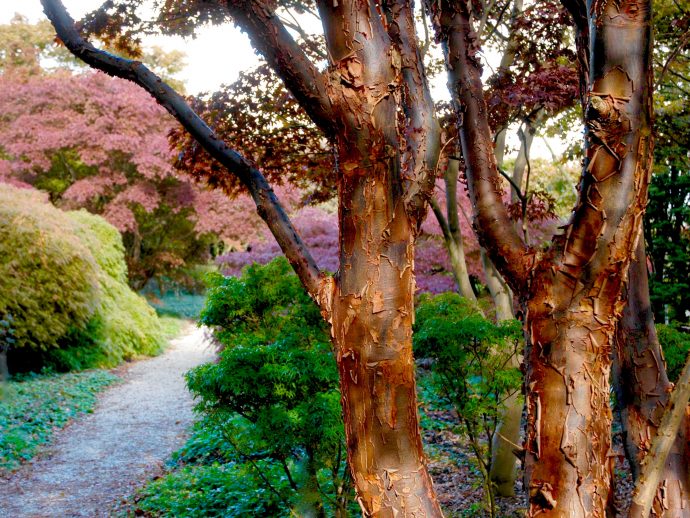
Bark of Acer griseum
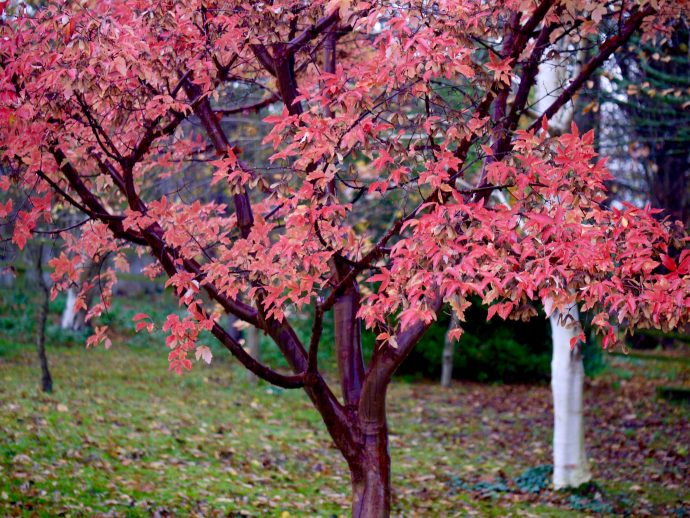
Acer griseum in Autumn
A cousin, the paperbark maple, Acer griseum, is another fine small garden tree. The summer foliage is attractive, the autumn foliage exceptional, and the peeling caramel bark a fabulous addition in winter.
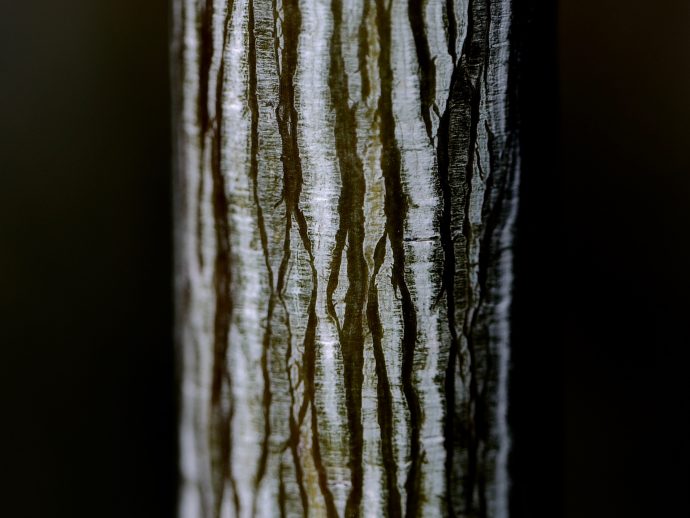
Acer davidii bark
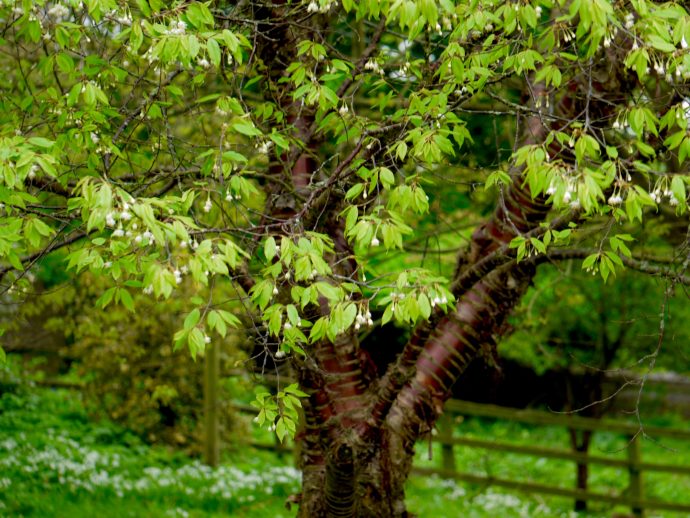
Prunus serrula
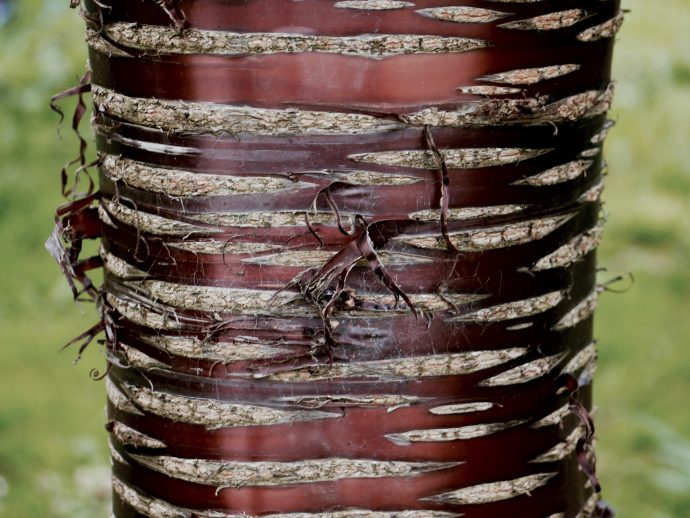
Prunus serrula bark
Acer davidii is another lesser seen maple relative. It has atypical maples leaves tapering to a single point, spectacular autumn colour, and very distinctive snakeskin bark.
In a similar vein, Prunus serrula, birchbark cherry, has wonderful peeling bark also and a fine habit wonderful above what is or will be a woodland planting. Consider a multi-stemmed specimen for further interest.
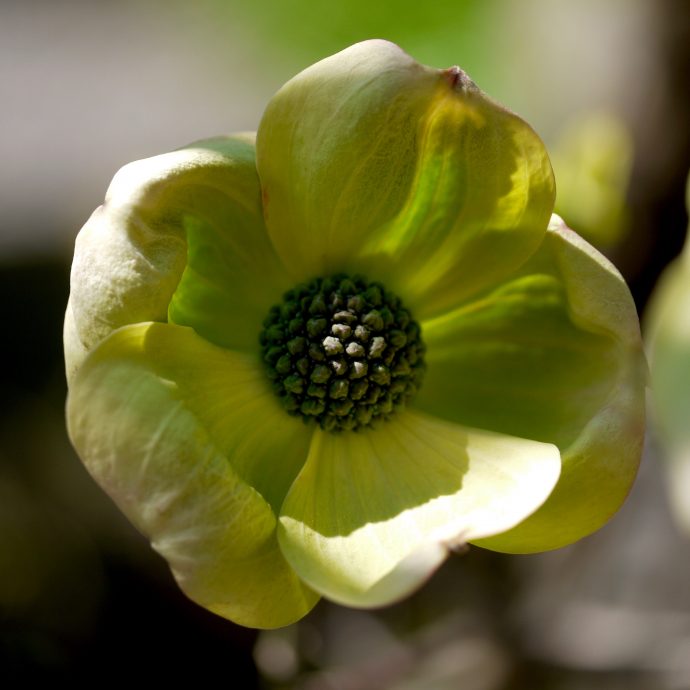
C. Eddie’s White Wonder
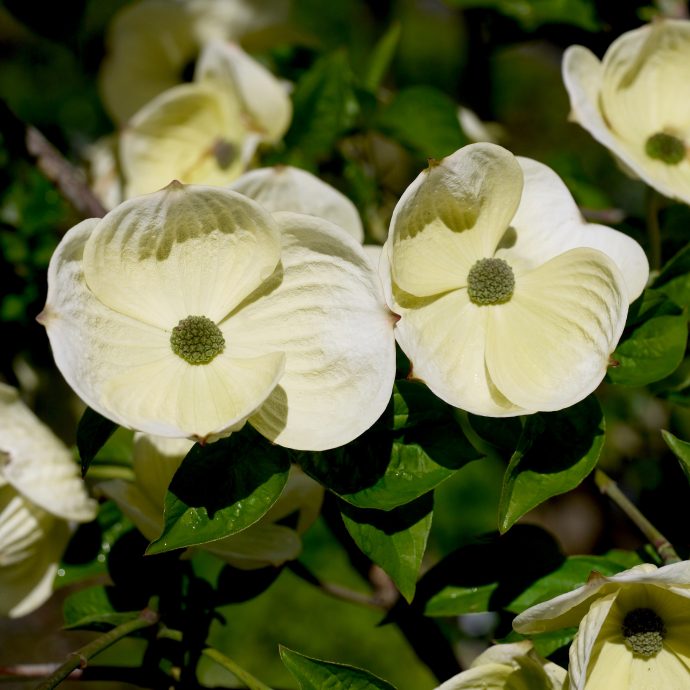
Cornus kousa Variety
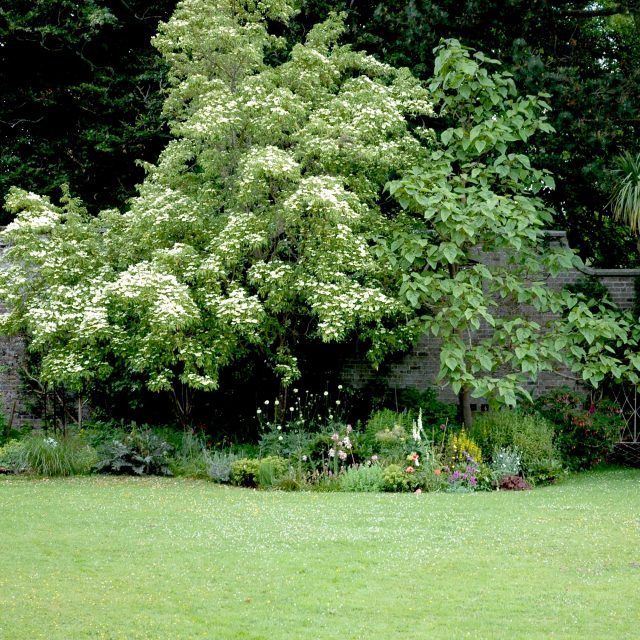
Cornus capitata
One of our most remarked upon plants in early to mid summer are the flowering dogwood trees. The early flowering trees like Cornus ‘Eddie’s White Wonder’ start the show and the Cornus kousa varieties and Cornus capitata an evergreen species take up the performance in June. All feature small true flowers surrounded by very showy, usually white, bracts. They’re a talking point in any garden and an excellent small to medium sized tree.
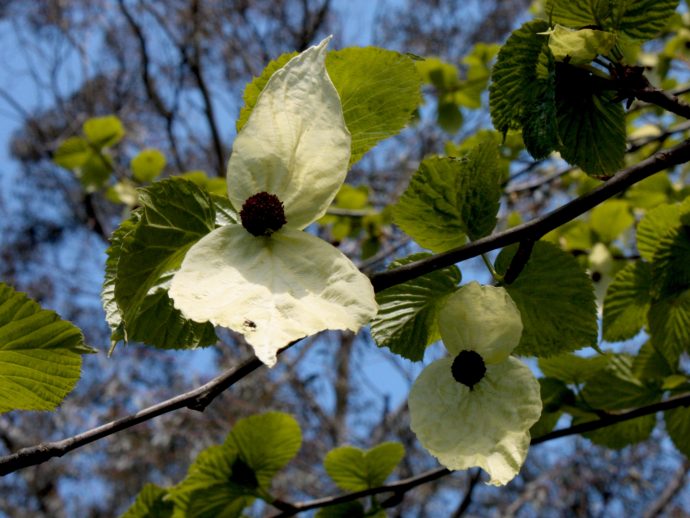
Davidia involucrata
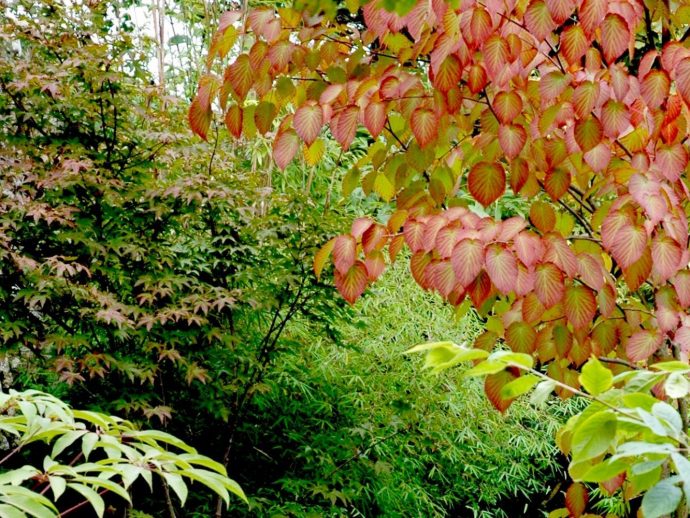
D. involucrata in Autumn
Also known for its showy white bracts is the dove- or handkerchief-tree, Davidia involucrata. These are larger in time and can be reluctant to flower, but an established tree in late spring is the most spectacular tree in any garden; hung with hundreds of ghost-like flowers.
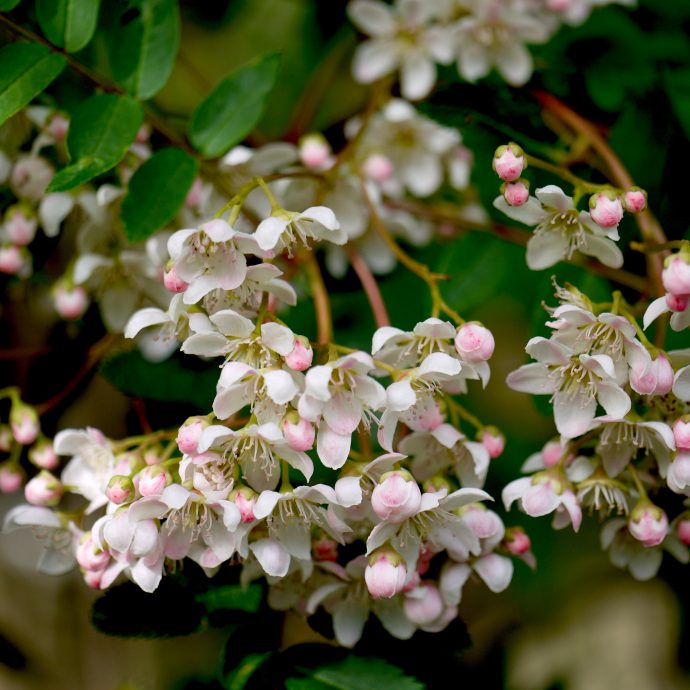
Sorbus cashmeriana
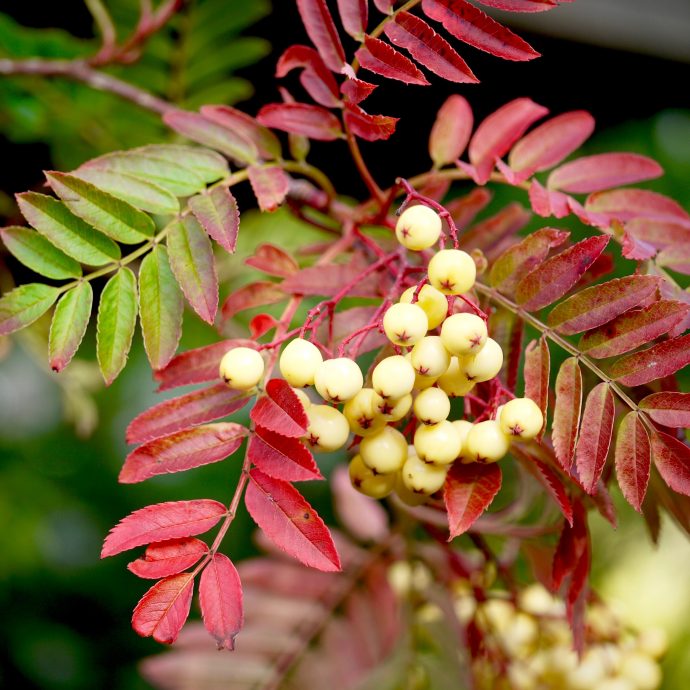
S. Joseph Rock
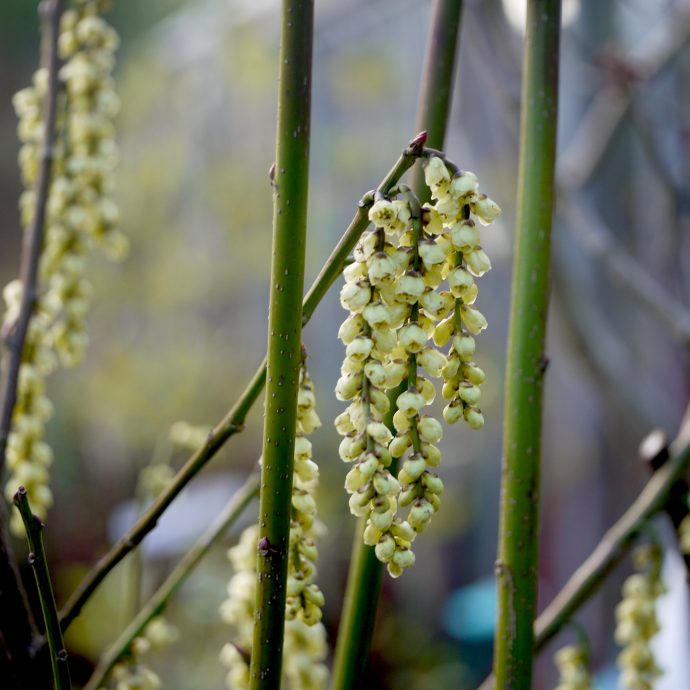
Stachyurus praecox
For multi-season interest and especially for wildlife it is hard to beat the rowan or mountain ash, Sorbus sp. Spring flowers for bees, lacy foliage, berries for birds and fine autumn colour in a compact tree. They’re hard to beat for height in a small garden.
Shrubs and trees with pendant racemens of flowers like Stachyurus, Hazels and Corylopsis add further drama to a woodland garden.
It’s useful to think of a garden as a space which will mature as we age, and picking the right trees and shrubs sets the scene for everything your garden will become.
